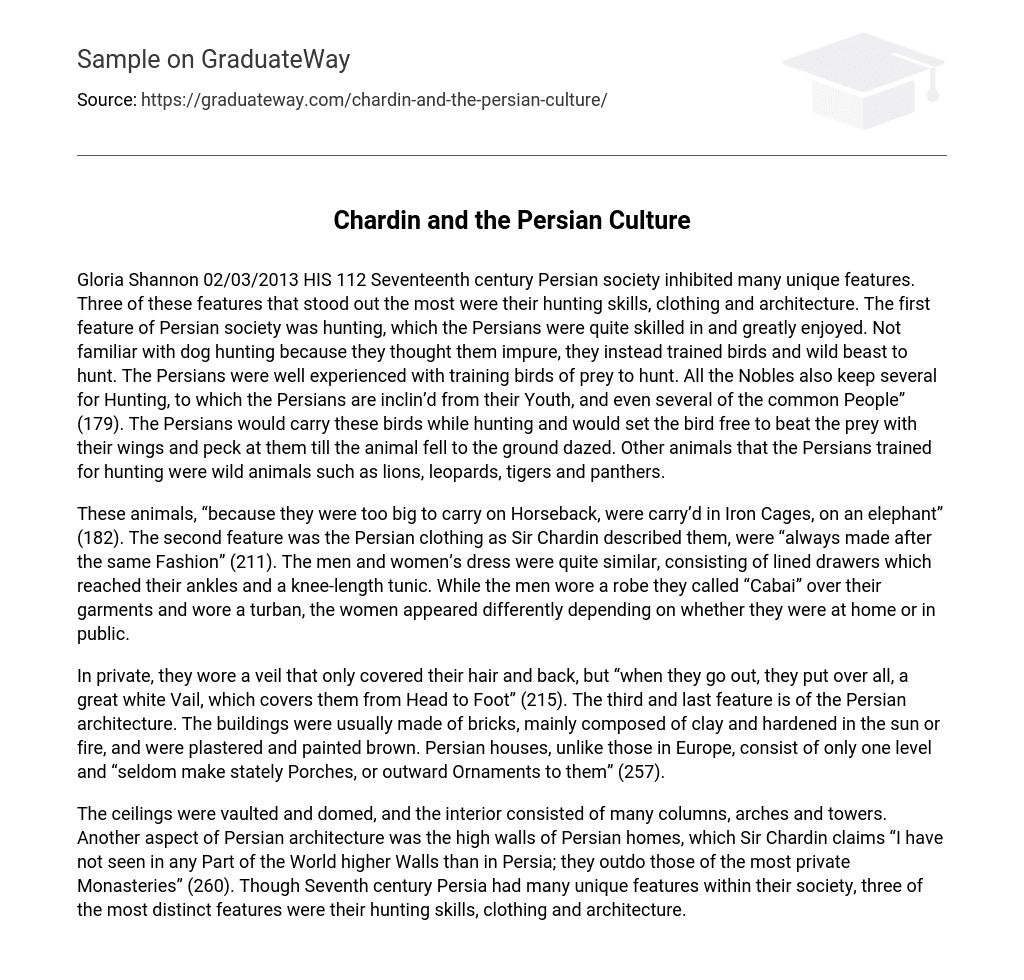Persian society inhibited many unique features. Three of these features that stood out the most were their hunting skills, clothing and architecture. The first feature of Persian society was hunting, which the Persians were quite skilled in and greatly enjoyed. Not familiar with dog hunting because they thought them impure, they instead trained birds and wild beast to hunt.
The Persians were well experienced with training birds of prey to hunt. All the Nobles also keep several for Hunting, to which the Persians are inclin’d from their Youth, and even several of the common People” (179). The Persians would carry these birds while hunting and would set the bird free to beat the prey with their wings and peck at them till the animal fell to the ground dazed. Other animals that the Persians trained for hunting were wild animals such as lions, leopards, tigers and panthers.
These animals, “because they were too big to carry on Horseback, were carry’d in Iron Cages, on an elephant” (182). The second feature was the Persian clothing as Sir Chardin described them, were “always made after the same Fashion” (211). The men and women’s dress were quite similar, consisting of lined drawers which reached their ankles and a knee-length tunic. While the men wore a robe they called “Cabai” over their garments and wore a turban, the women appeared differently depending on whether they were at home or in public.
In private, they wore a veil that only covered their hair and back, but “when they go out, they put over all, a great white Vail, which covers them from Head to Foot” (215). The third and last feature is of the Persian architecture. The buildings were usually made of bricks, mainly composed of clay and hardened in the sun or fire, and were plastered and painted brown. Persian houses, unlike those in Europe, consist of only one level and “seldom make stately Porches, or outward Ornaments to them” (257).
The ceilings were vaulted and domed, and the interior consisted of many columns, arches and towers. Another aspect of Persian architecture was the high walls of Persian homes, which Sir Chardin claims “I have not seen in any Part of the World higher Walls than in Persia; they outdo those of the most private Monasteries” (260). Though Seventh century Persia had many unique features within their society, three of the most distinct features were their hunting skills, clothing and architecture.





